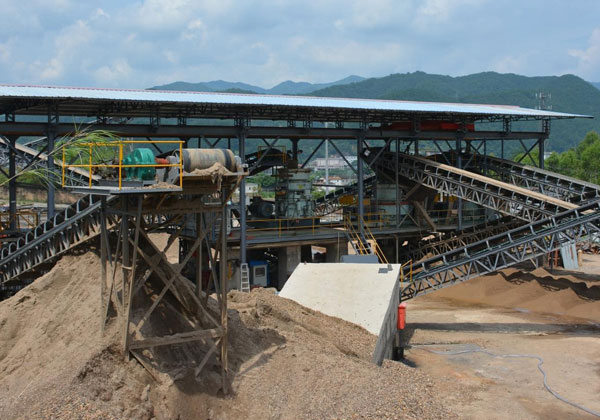Aggregate crushers play a crucial role in the production of construction materials, primarily used for producing aggregates such as sand, gravel, and crushed stone. These materials are essential for construction projects, including road building, concrete production, and other infrastructure works. Crushers are categorized based on their mechanism, processing capacity, and intended application. The types of crushers commonly used in the aggregate industry include jaw crushers, cone crushers, impact crushers, and gyratory crushers. Each type of crusher serves a specific purpose and is chosen based on the requirements of the operation.

1. Jaw Crushers
Jaw crushers are one of the most common types of crushers used in the aggregate industry. They are typically used for primary crushing operations, where large, hard materials like granite, basalt, and other types of rock are broken down. A jaw crusher works by using compressive force to break the material. The raw material is fed into a V-shaped opening between two jaws, where it is crushed as the jaws close together. The crushed material then passes through the gap at the bottom of the jaws.
Jaw crushers are known for their ability to handle large, heavy materials and produce a coarse output. They are ideal for hard rock applications and are often used as the first step in a crushing circuit.
2. Cone Crushers
Cone crushers are another popular type of crusher used in the aggregate industry. They are typically used for secondary or tertiary crushing, where materials that have already been reduced in size are further crushed to smaller dimensions. Cone crushers work by compressing the material between a moving mantle and a stationary concave liner. This allows for the production of finer materials while maintaining a relatively high throughput capacity.
Cone crushers are known for their ability to produce uniform and consistent products, making them a good choice for operations that require precise gradation. They are commonly used for processing materials like limestone, granite, and other aggregates.
3. Impact Crushers
Impact crushers are used for crushing softer materials or materials that require a high degree of reduction. These crushers work by using impact force to break the material. The material is fed into a rotor, which spins at high speeds and strikes the material against impact plates or anvils. The impact forces break the material into smaller particles.
Impact crushers are particularly useful for producing finer aggregates, such as those needed for high-quality concrete production. They are often used for secondary and tertiary crushing, especially for applications where producing well-graded products is essential.
4. Gyratory Crushers
Gyratory crushers are used for primary and secondary crushing in large-scale aggregate operations. They are similar in function to jaw crushers but are more efficient in processing large amounts of material. A gyratory crusher uses a conical-shaped crushing chamber, with a rotating mantle and a fixed concave liner. The material is fed into the top of the chamber and is crushed as it moves downward through the chamber.
These crushers are used in large-scale mining operations, especially for hard rock and other high-volume applications. They can handle very large feed sizes and are typically used for primary crushing, before the material is passed on to secondary crushers for further reduction.
Applications of Aggregate Crushers
Aggregate crushers are used in various sectors within the construction industry. They play a crucial role in the production of:
- Concrete: Fine and coarse aggregates produced by crushers are used in the production of concrete. The aggregates provide strength and durability to concrete, making it suitable for building structures, roads, and bridges.
- Road Construction: Crushed stone, gravel, and sand are essential materials in road construction. Aggregate crushers produce the materials required for paving roads, highways, and other infrastructure projects.
Importance in the Industry
Aggregate crushers are an essential component in the production of materials needed for construction and mining industries. They provide the required size and shape for materials used in concrete production, road construction, and other key sectors. The demand for aggregates is directly tied to infrastructure growth, urbanization, and economic development. With advances in crusher technology, aggregate crushers continue to become more efficient, reliable, and capable of handling a broader range of materials, ensuring that the supply of aggregate materials remains steady and meets the industry’s needs.
